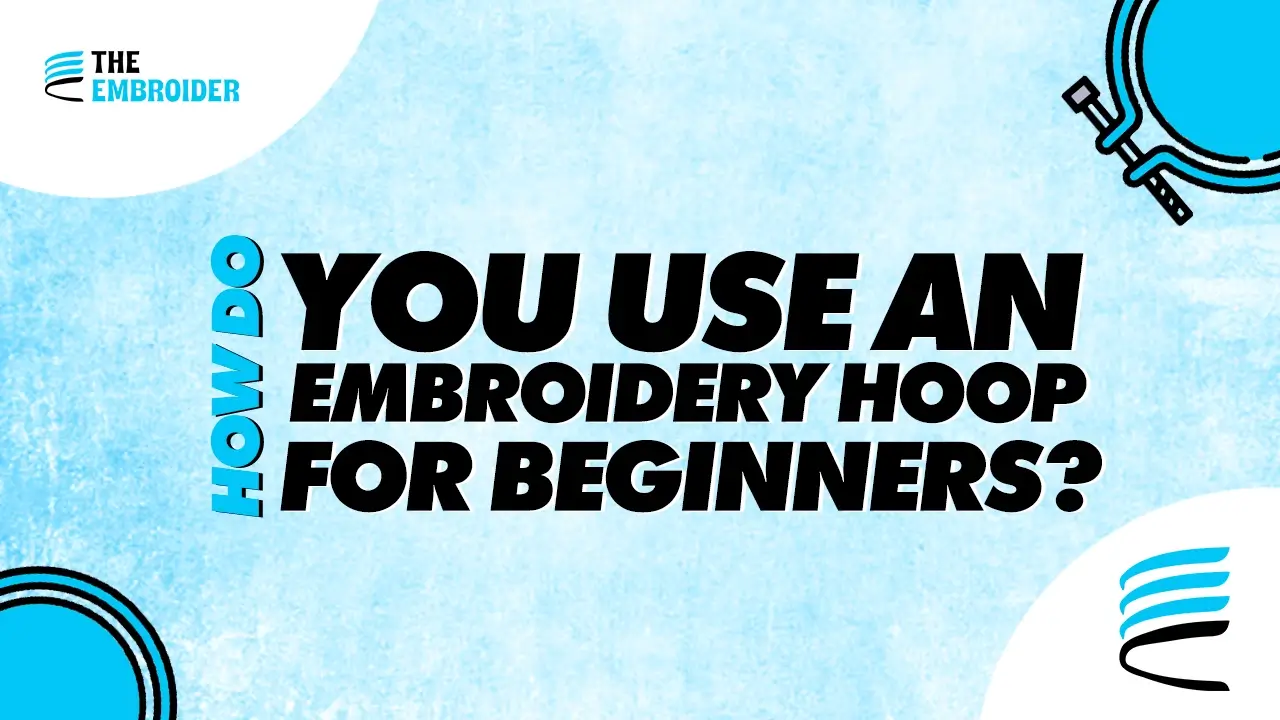An embroidery hoop is a valuable tool for keeping fabric taut during stitching. It provides stability and ease during stitching. Thus, it’s an important tool for beginners. Therefore, a lot of people ask about using an embroidery hoop for beginners.
To use an embroidery hoop, separate the rings first and place fabric over the inner ring. After that, position the outer ring and tighten the screw. Then, center the fabric, trim excess, and embroider. Reposition as needed, loosen the screw to finish, and store the hoop in a dry place.
Well, there is more to it. Thus, I’m going to guide you through the basics of using different embroidery hoops. So, keep reading.
Step By Step Guide To Use An Embroidery Hoops:
Embroidery hoops come in various materials, including wood, bamboo, and plastic. They can have screws on the outer ring or a rubber mechanism rolled onto the inner ring. Metal hoops and different shapes such as circle, oval, and square are also available. However, the circle shape is the most common due to its practicality. Let’s get to know about choosing the right size and material of embroidery hoop and mounting it accordingly.
Guide for Wooden Hoop And Bamboo Hoop
- Loosen the screw and separate the rings.
- Lay the inner ring on a flat surface and place your fabric over it.
- Center the pattern on the hoop.
- Press down the outer ring over the fabric onto the inner hoop.
- Tighten the screw, ensuring the fabric is taut.
Guide for Plastic Hoop
- Place the inner ring on a flat surface with the lip side up.
- Put the fabric over it.
- Loosen the screw and press the outer ring over the fabric.
- Tighten the screw, making sure the lip grips the fabric.
Guide for Flexi Hoop
This hoop, made of a plastic inner ring and an outer rubber ring, does not have a screw. Instead, the outer ring can be stretched and rolled onto the inner ring.
- Place the inner ring on a flat surface.
- Put the fabric over it.
- Slip the outer ring onto the inner ring, stretching it as needed.
- The fabric is held firmly in place.
Incorporating these techniques will help you make the most out of different embroidery hoops, enhancing your stitching experience and displaying your finished work effectively.
Choosing the Right Hoop Size
The size of the hoop is determined by its diameter, and choosing the right size is crucial for your project. Ideally, select a hoop approximately one inch larger than the size of your pattern. Adjusting the hoop size is necessary for larger patterns, where you can use a smaller hoop and move it to the specific stitching area.
How To Use The Hoop Of Machine Embroidery:
Let’s move on to the simple and professional process of hooping your fabric for machine embroidery. Let’s make sure your designs come out perfectly every time.
Prepare Your Fabric
Begin by folding your fabric gently and taking note of its thickness when folded. This will serve as a helpful reference for achieving an ideal hoop.
Adjust Your Hoop
Locate the corner of your hoop with the adjustable knob. Loosen or tighten it until the gap matches the thickness of your folded fabric. This preemptive adjustment eliminates the need for excessive tightening later, preventing any damage to your fabric.
Hoop Your Material
Place the bottom hoop on the table, ensuring the corner with the knob is farthest from you. Lay your fabric and stabilizer on top, then take the top hoop, swiftly push it forward and down into the bottom hoop. A well-adjusted hoop will provide just enough resistance.
Tightening Technique
Avoid over-tightening the knob after hooping. Instead, on the table, gently pull the fabric from the longer sides of the hoop. Lift the hoop, and with a slight push to the corners, achieve a drum-tight surface, perfectly prepared for machine embroidery.
These steps will ensure a secure and professional hooping for your machine embroidery projects. Now, confidently place your hooped fabric onto your machine and let the embroidery begin. But don’t forget a perfectly digitized file can create a perfect machine embroidery. So, if you want to hire someone for perfect embroidery digitizing weather it’s jacket back embroidery or cap logo, contact “The embroider”.
Conclusion:
To sum up, understanding the use of an embroidery hoop is crucial for beginners learning embroidery. The proper hoop ensures stability, smoothing your embroidery journey. We’ve covered the fundamentals, from selecting the right hoop material and size to a step-by-step guide for various types.
Now, an extra tip: For flawless results, remember two expert techniques. First, for large rectangular hoops, secure your fabric with T-pins strategically placed where it protrudes between the frames. Ideal for stabilizers or less crucial fabrics, T-pins prevent unwanted movement during stitching. Second, when dealing with sheer or slippery fabrics, opt for double-sided tape on the outer hoop’s inner surface. This prevents slipping, ensuring your fabric grips securely. The tape, gentle on most fabrics, provides stability without any residue.
So, Armed with these tips I hope now you can confidently hoop your fabric for machine embroidery, as well as hand embroidery.

